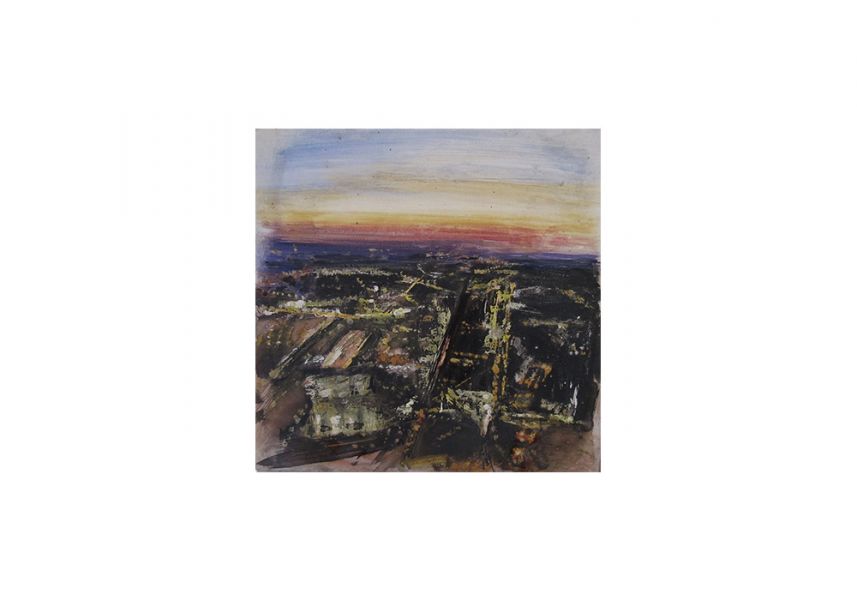
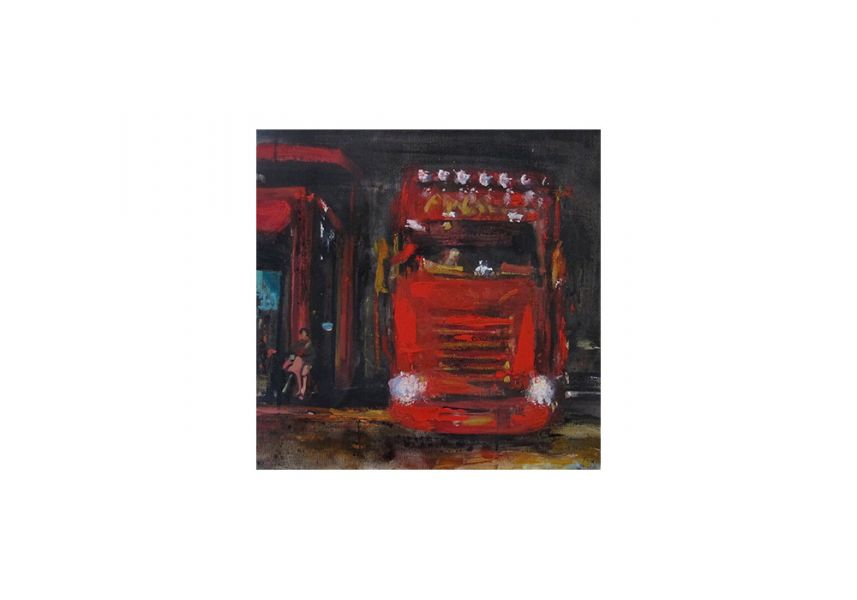
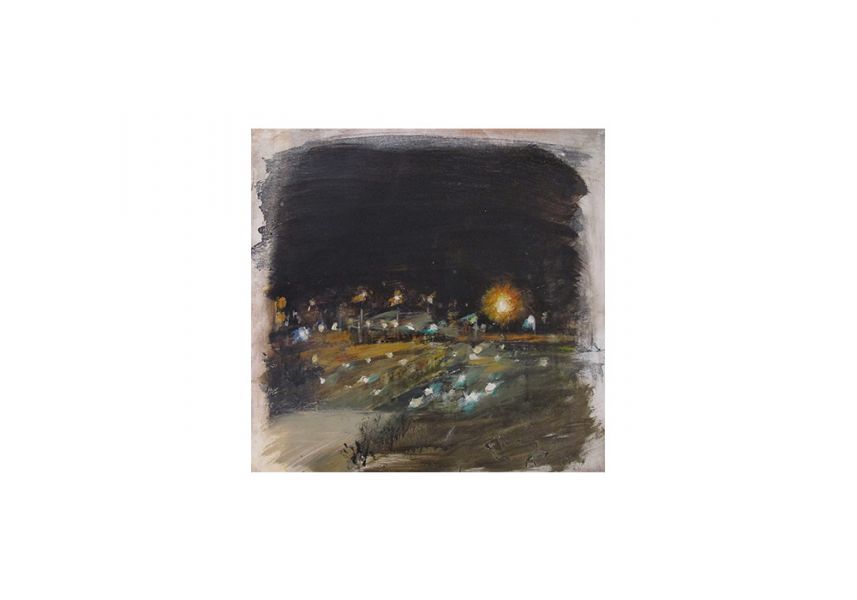
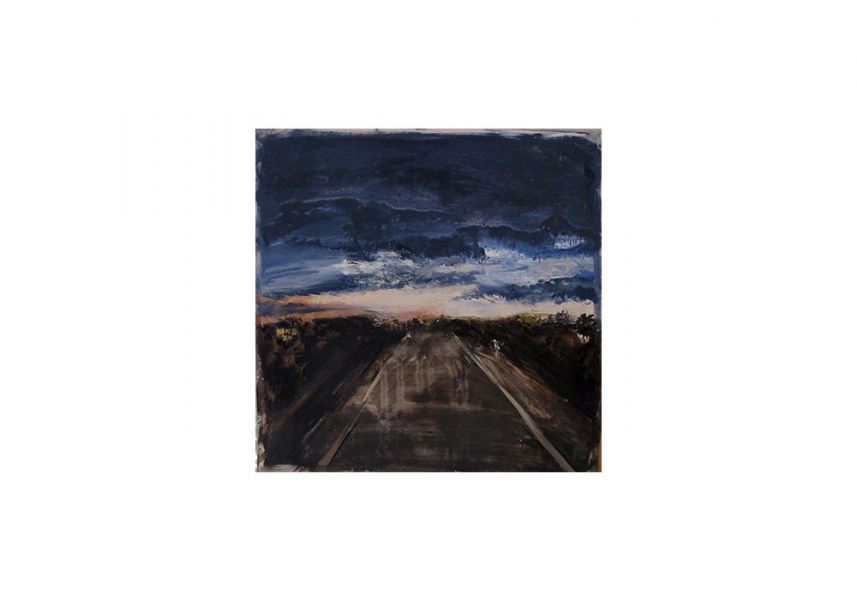
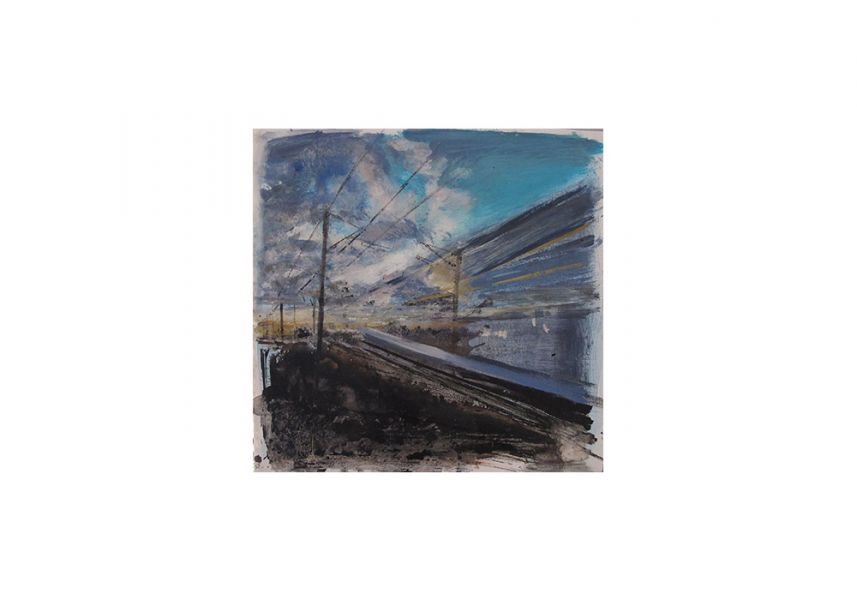
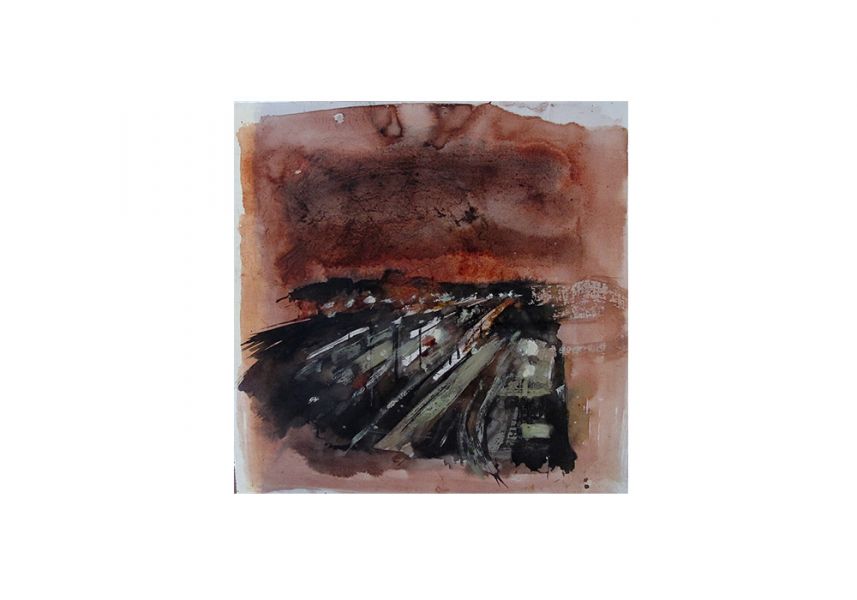
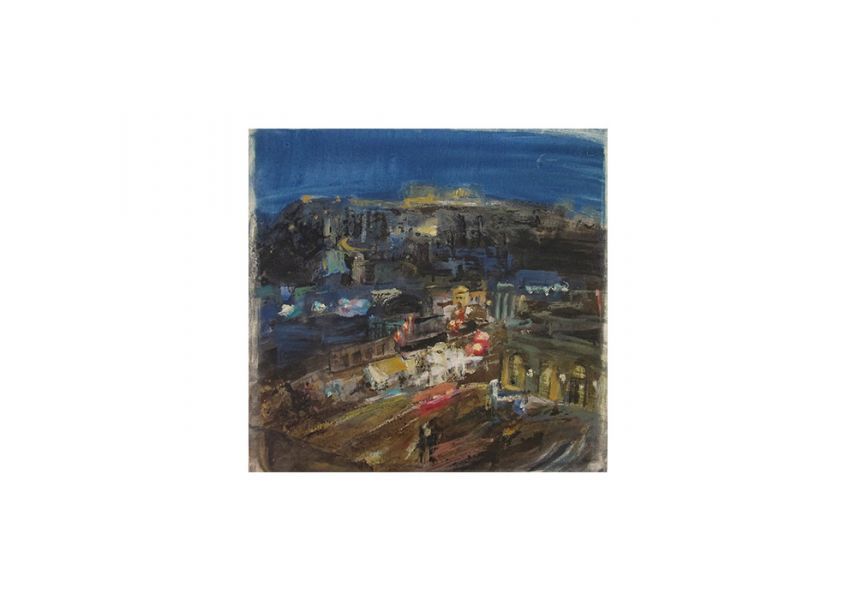

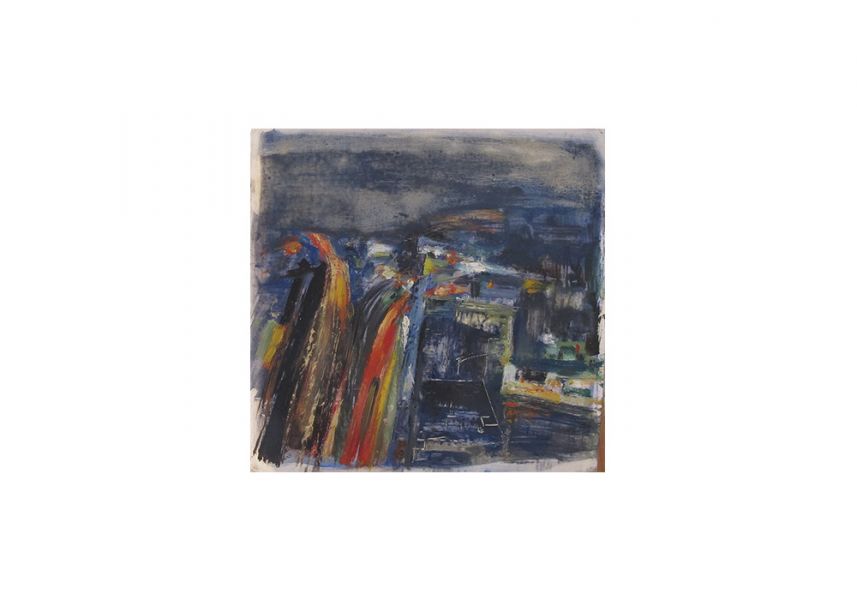
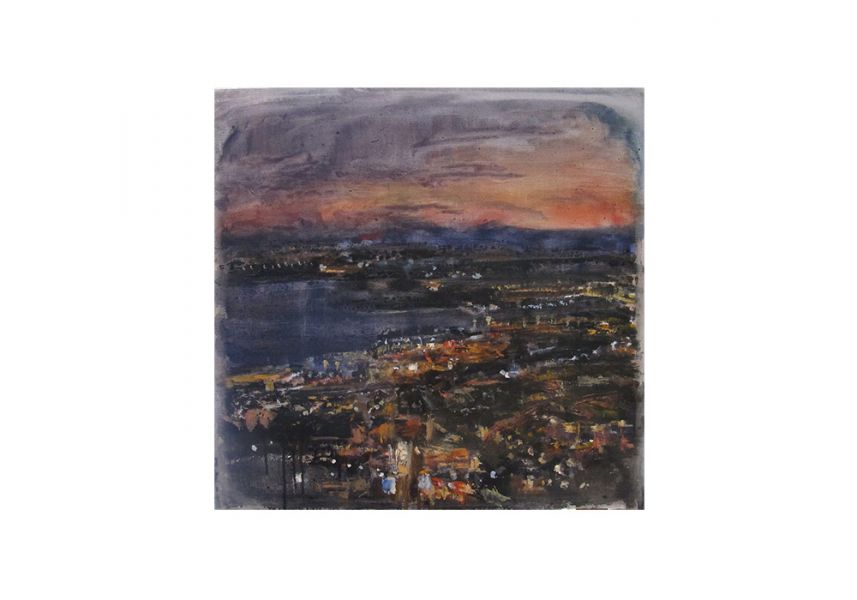
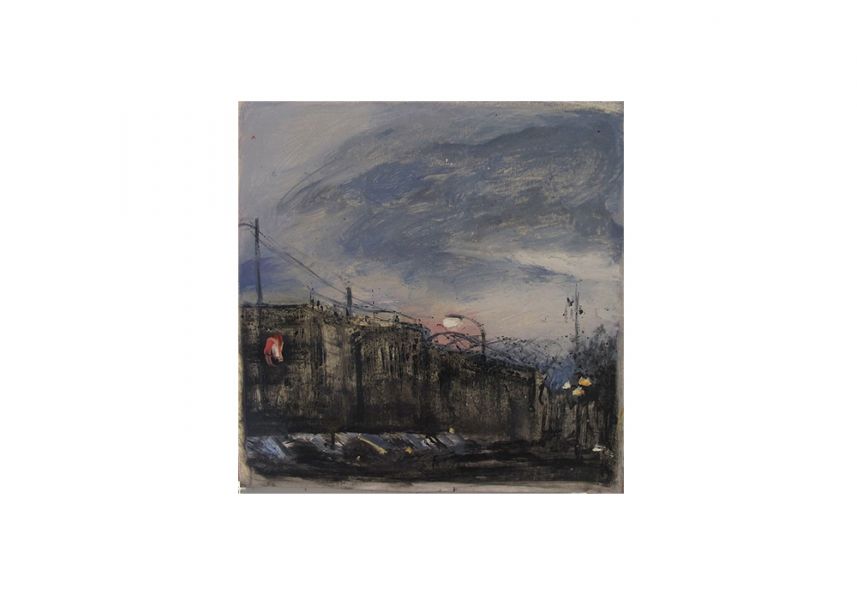
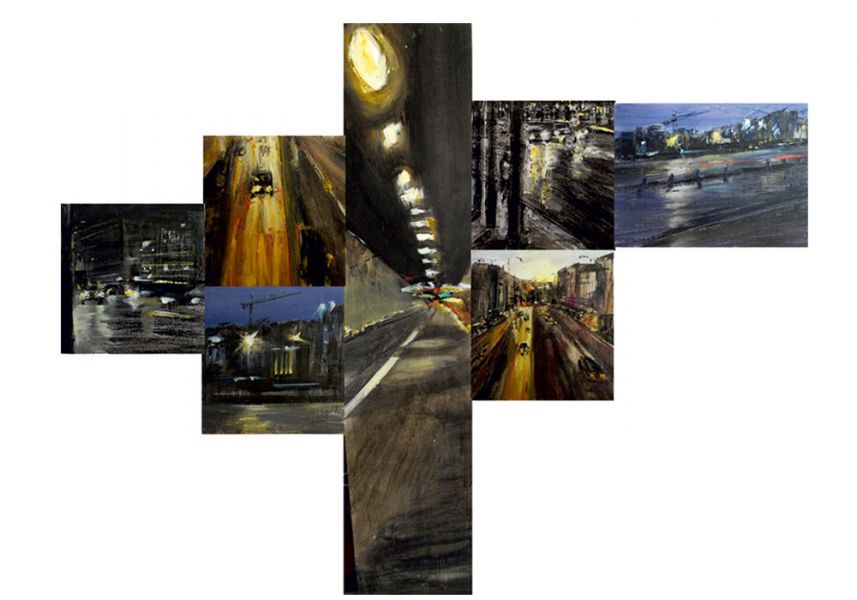

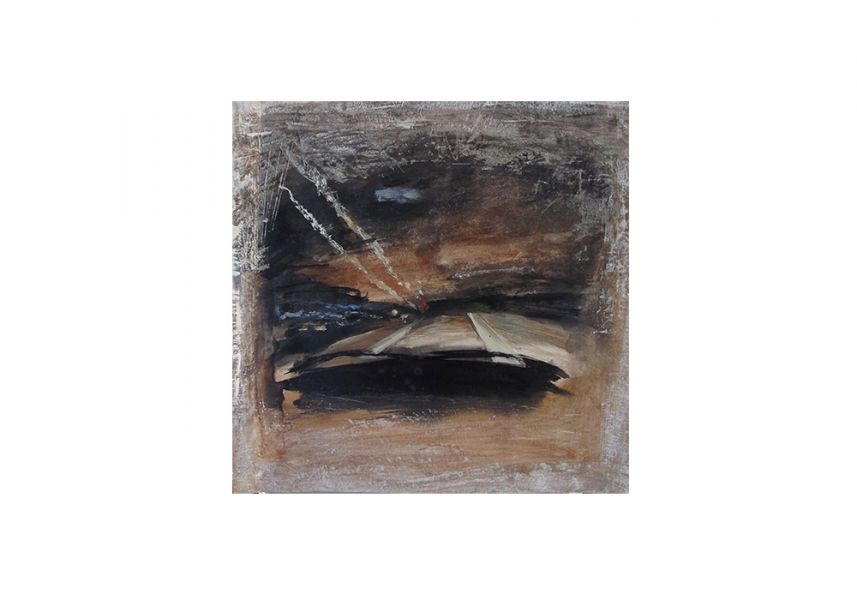
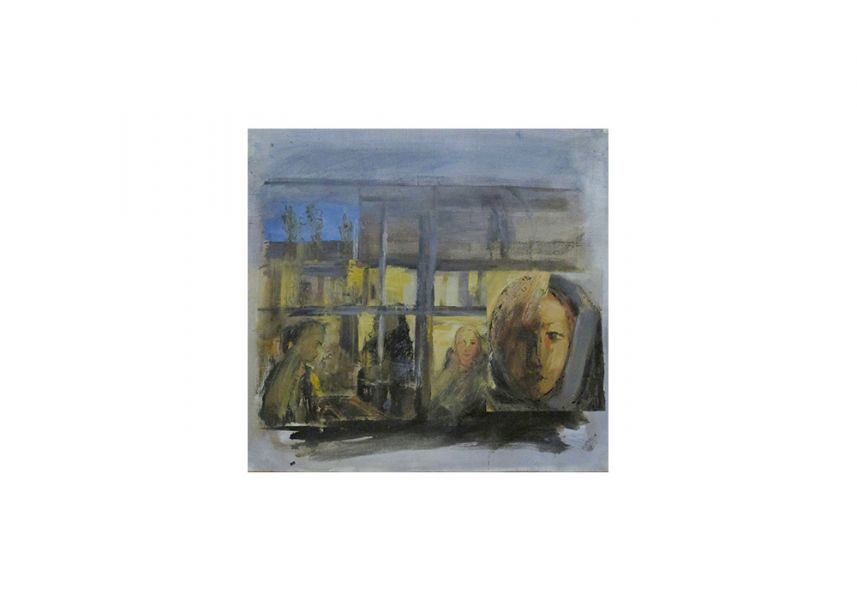
City lights
Ordinary everyday familiar images, transfigured by the night lights
Many images, set in a compound composition one next to the other, because my eyes find satisfaction in segmentation, voiding a static work’s uniqueness and autonomy. I need a sight comprising the aspects of time, fluidity, and motion; works that can be extended.
A gesture in painting, the matter’s energy, not in a self referring manner.
The image’s flesh transcends information.
A reaction to illustration.
Mato Ioannidou
November 2014
The day is not “sunny and beautiful” or “sun-drenched”; it hardly exists. The city is, self-evidently, not a “sapphire stone”-and now is not the time for picturing Earth like a maiden wearing a ring (all references to the poem “The King’s Flute” by K. Palamas). Many dark loads of insight have interceded. “The light everywhere and all the light and the light shows all”: of course not. Even if this is about an artist that has, in the recent past, managed to discern mermaids and Saint Georges from a convincingly modern aspect.
It dawns, but for the most part the night is falling. There is no us, we, within the day. Something in the Athenian day has temporarily exiled us. The light-it exists, yes, but it is now a different kind. It is indirect and distant. In the time that came by, something changed, in depth, definitely. The surrounding atmosphere and our own paths: the adulthoods that came successively, the wandering around in maps of time. They say that, in the meantime, the climate changed, that we have more humidity, which, in turn, alters the dawns and dusks.
The illustrated city in Mato Ioannidou’s work is in constant movement: streets, lights, glooms of an almost Kafkaesque quality but also some perspectives of sky. Athens, which nowadays never lets us focus with terms of daily (namely: unextraordinary) familiarity, directs our gaze elsewhere. With almost no exceptions this “elsewhere” does not include human presence. It includes buildings, lights, vehicles. It opens up to urban settings and refers equally to flee and homesickness.
But horizons are dominant: washed by the rains, discoloring its currently indelible smudges, the city has horizons of light in shades much more complex and interesting. The teenage of an one-dimensional, shallow brightness and of an equally shallow teapot blue has acquired the colorful depth of the real crossroads it constitutes today.
The uneven parts of the city, sewn together by Mato Ioannidou with a love one uses to sew the cherished and ruined, in the creations of this exhibition, are drenched with millions of human breaths. The faces, absent, become urgent. The horizons seem to surprise us now and then-we had not grown used to the idea of such a complexity. Nor had we learned to lose ourselves in its allurement.
The old tale, with a beginning, middle and end: disaster, flood, revitalized horizons over the weary grimness of the old world, new inhabitation by the new female principle. Which is at the same time a little old and a little new, partly a memory and partly a new arrival, partly rooted and partly a refugee.
Because the new spirit has come. It exists within the city. We see it passing through the window in the bus. It’s raining (after such a definitive ending, rain cannot be omitted). Comforting and exceptionally vulnerable, it refers to the journey of an once native innocence but is unrecognizably “foreign”. Foreign?
Maria Topali

